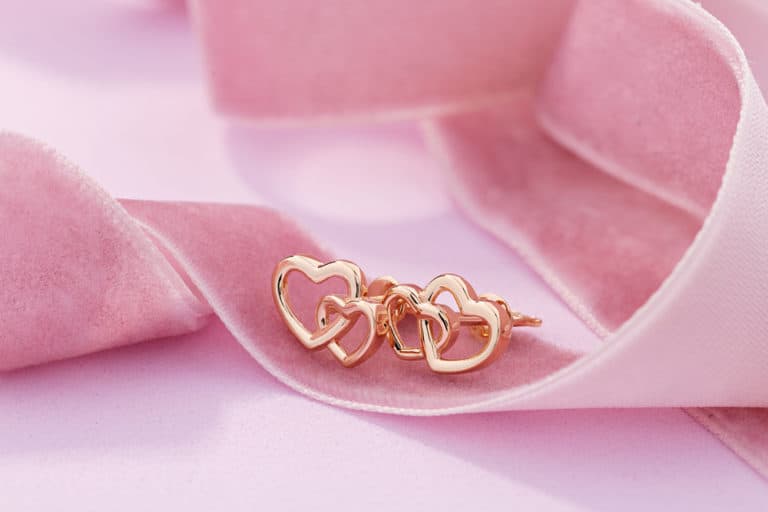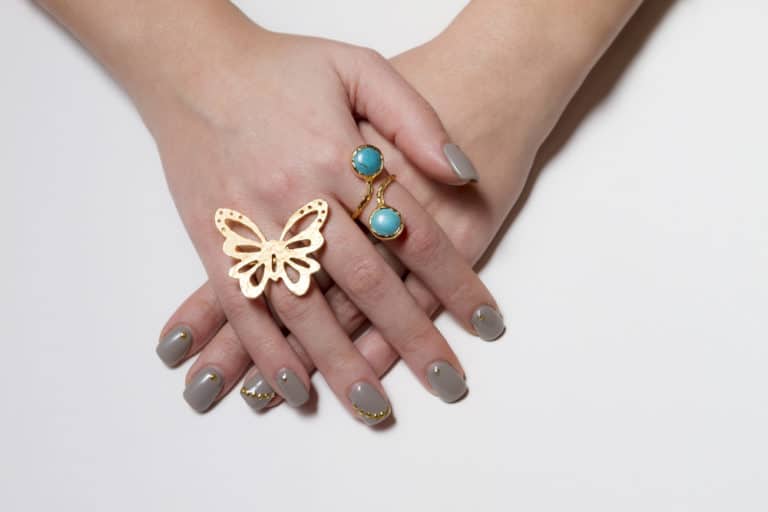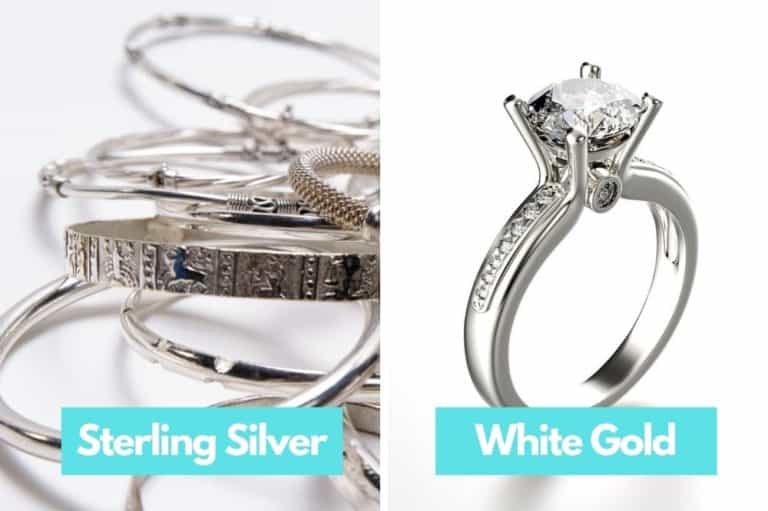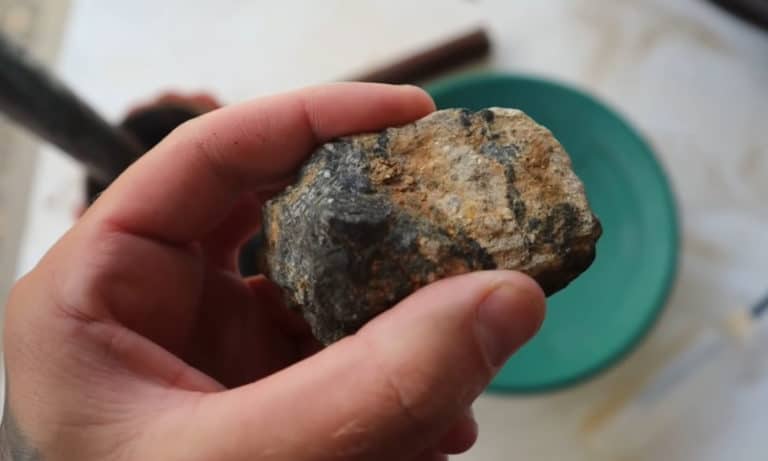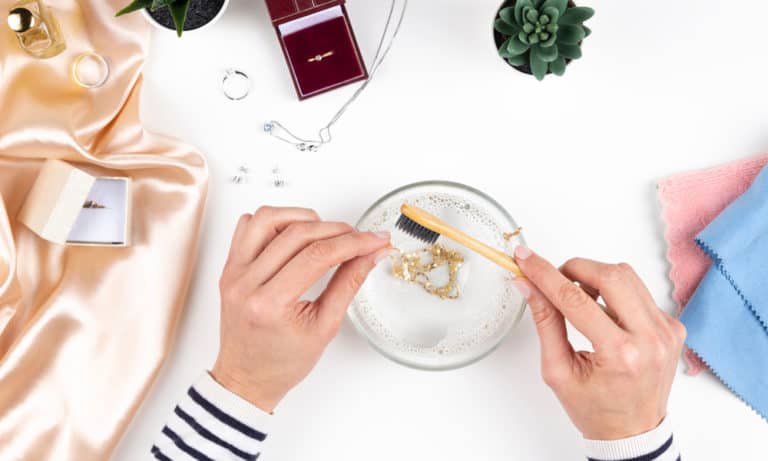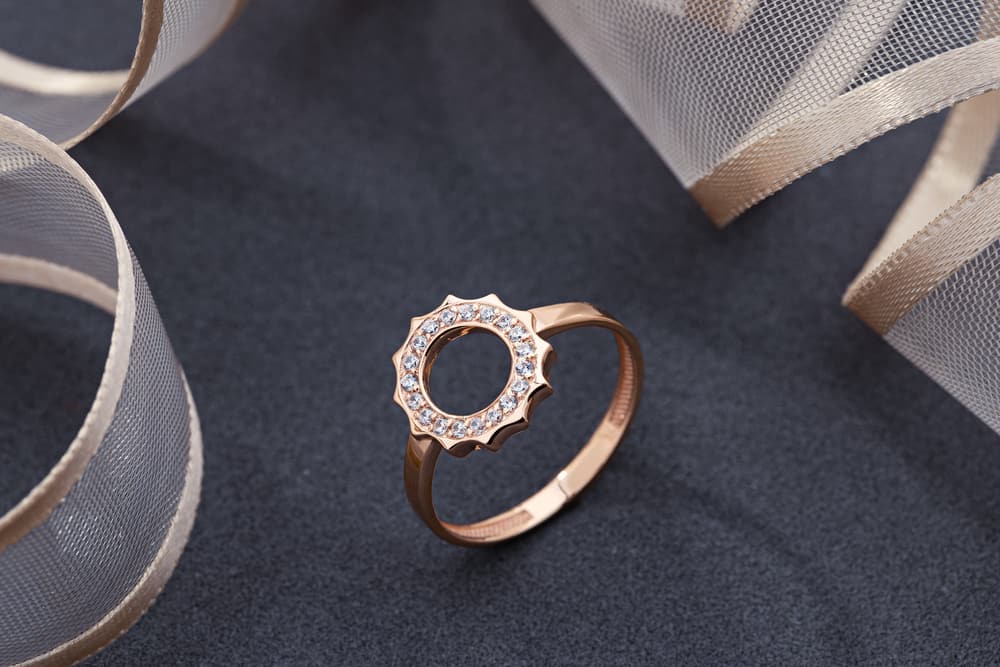
Although gold is famous for its strikingly yellow color, you can often find it with red or pink shades. Red, pink, and rose gold are increasingly popular due to their unusual and romantic colors.
If you hear people using all three of these terms to describe the same jewelry pieces, you will probably wonder about the difference between red gold vs. pink gold vs. rose gold. As you can guess, the secret is in the added alloy that affects the reddish color of the regular yellow gold. Let’s take a closer look at the subject.
Colored Gold
Gold is considerably soft in its pure form and highly difficult to shape. Therefore, jewelry makers mix gold with various other metals to make it firmer and more suitable for shaping.
These metals are zinc, silver, copper, iron, nickel, and palladium in most cases. As a result, alloy affects gold and changes its color.
Jewelers often use metals like copper and silver to change the gold’s color and get unusual and trendy combinations. In other words, red, pink, and rose gold are nothing but pure yellow gold mixed with these two metals. Their mutual percentage ratio affects the final shade.
Red Gold vs. Pink Gold vs. Rose Gold – Content
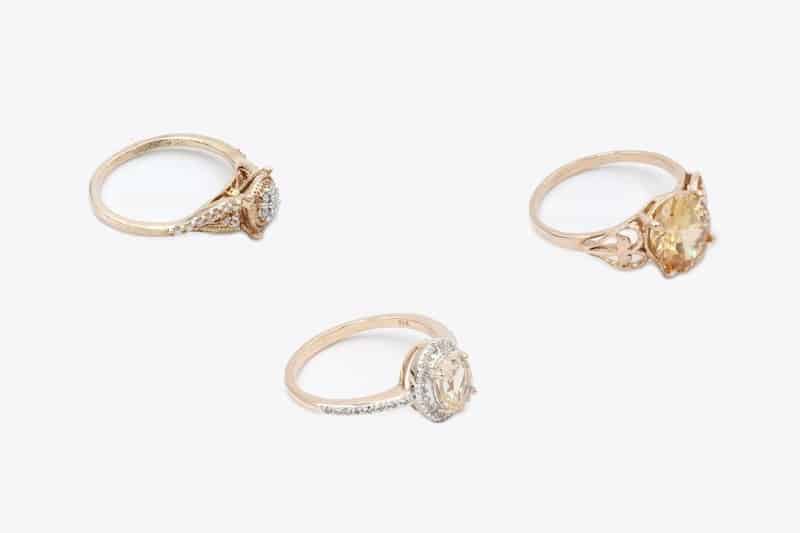
The primary difference between red, rose, and pink gold is in alloys quantity and ratio. To make things more complicated, it is possible to use different gold percentages and get jewelry made of 18K and 14K gold with a red coloration.
As you have probably known, pure gold has 24 karats, meaning it contains 24 gold parts out of 24 possible. In gold alloys used for making jewelry, some of those parts are made of other metals. In a case of red, pink, and rose gold, these parts are copper and silver.
Alloy content in different gold types |
||||
| Gold type | Karat | Gold | Silver | Copper |
| Pure | 24K | 99.9% | 0% | 0% |
| Red | 18K | 75% | 0% | 25% |
| Rose | 18K | 75% | 2.5% | 22.5% |
| Pink | 18K | 75% | 5% | 20% |
| Rose | 14K | 58.3% | 41.7% combined | |
As you can see, 18K red gold piece is 18 parts gold and six parts copper. The same applies to rose and pink gold, but in this case, 18 parts are gold, and the other 6 are silver and copper in different combinations. In 14K rose gold, the alloy contains 14 gold parts and ten parts of copper and silver.
Red Gold vs. Pink Gold vs. Rose Gold – Differences
One of copper’s primary characteristics is its red-orange color. When you mix it with yellow gold, it gives those remarkable red, pink, and rose gold tones. There is still a large diversity in possible shades, and the jewelers can get fantastic results by playing with the alloy added to pure gold.
The more copper a jewelry maker uses, the more intense red coloration will get. Additionally, different brands combine various amounts of copper and silver to achieve the desired shade. Thanks to its white color, silver helps to make more gentle tones. That way, gold jewelry will appear more red or pink with a tinge of orange.
Red Gold
Making red gold requires the highest copper content in the alloy used. Therefore, the jewelry color appears darker than rose and pink. It resembles copper the most, but with a touch of gold’s characteristic luster.
Rose Gold
Rose gold color ranges between red and pink when considering both copper percentage and the color. Plus, it contains a low silver percentage along with copper. Compared to red gold, rose gold is a bit paler, but it still has a warm shine.
Pink gold
Pink gold has the lowest copper content and more silver than rose gold, making it recognizable by its baby pink color. It is noticeably paler than red and rose gold and has cooler tones.
14K and 18K Gold
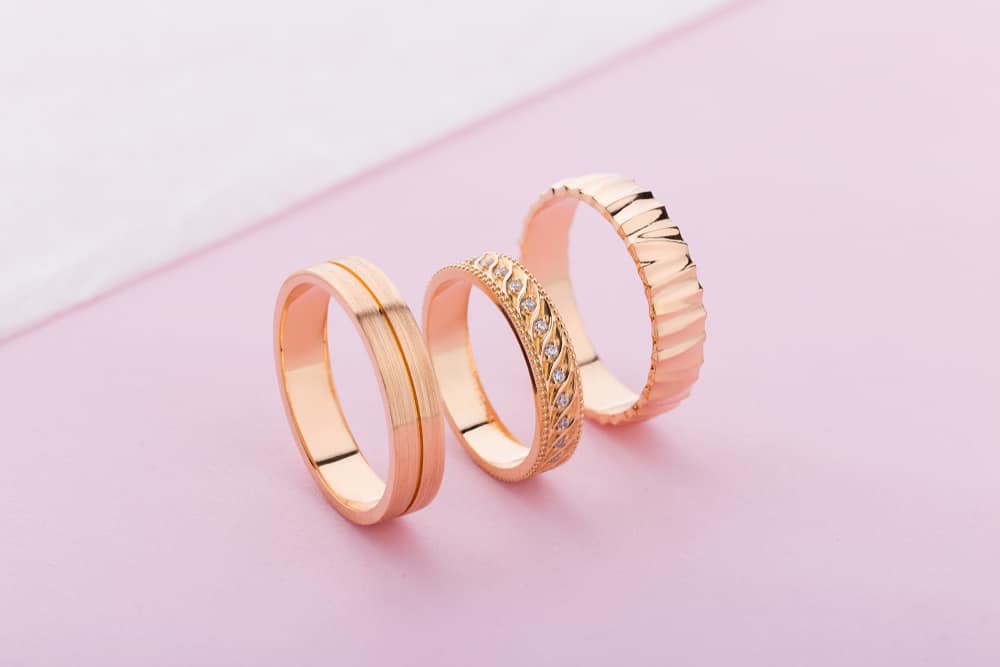
When deciding to buy jewelry made of red, pink, or rose gold, you will most commonly find 14K and 18K colored gold options. Which one variation you decide to choose will depend on the color you prefer.
As you can guess, it is not only the copper percentage that affects the color, but the gold content also has a role in that.
With a higher gold percentage, 18K rose gold has a more discreet color that resembles pale orange or champagne. Compared to it, the one with 14K has less gold and more copper, so its color is deeper and intensively pink.
As you can expect, their prices will also differentiate. No matter what color gold is, 18K is always more expensive than 14K because of the higher gold purity.
Red, Pink, and Rose Gold Origin
There is a high demand for reddish-gold jewelry in the last few decades. However, this kind of gold is not a new invention. It appeared in mid-19th century Russia for the first time.
A Russian jeweler Karl Gustavovich Faberge (Peter Carl Faberge), the creator of famous Faberge Eggs, was the first to use rose gold. The Russian aristocrats immediately started to wear gold in pinkish shades. After a while, this esteemed jeweler’s designs became very popular among people of different classes.
The popularity of rose gold, called initially Russian gold, spread to Victorian England in the late-19th century. It didn’t take much longer until the rest of the world started using these alloys.
Change of Trends
Rose gold gained popularity in the US at the beginning of the 20th century. Its soft color was feminine and lavish, which was the desired image of most 1920s young ladies. Rose gold was an excellent choice for an engagement ring at that time.
Over the years, rose-colored gold was in and out, following fashion and social changes. Luxurious platinum suppressed it for a while, but this gold type restored its former glory after the government banned platinum for all non-military use during World War 2.
Red, Rose, and Pink Gold Today
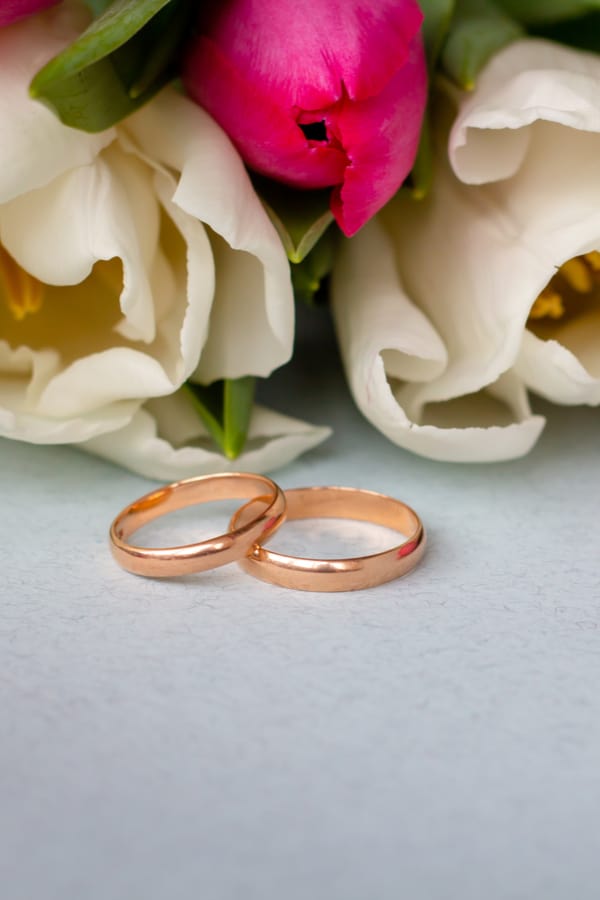
Rose gold has been increasingly trending again and is considered quite romantic in the last two decades. The delicate color of red and pink gold is more subtle than the yellow one and more peculiar than the white color of platinum or silver.
Red, pink, and rose gold have remained a popular choice for many jewelry pieces, particularly wedding and engagement rings. It is often ornamented with diamonds and other precious stones.
Surprisingly, pinkish gold tones are more and more popular with men nowadays. Men’s fashion mainly uses red gold for watch cases.
You can also find jewelry made with intertwined rose and yellow or white gold. The most famous piece of this kind is Cartier’s Trinity ring, made with three different gold colors.
Red, Pink, and Rose Gold’s Features
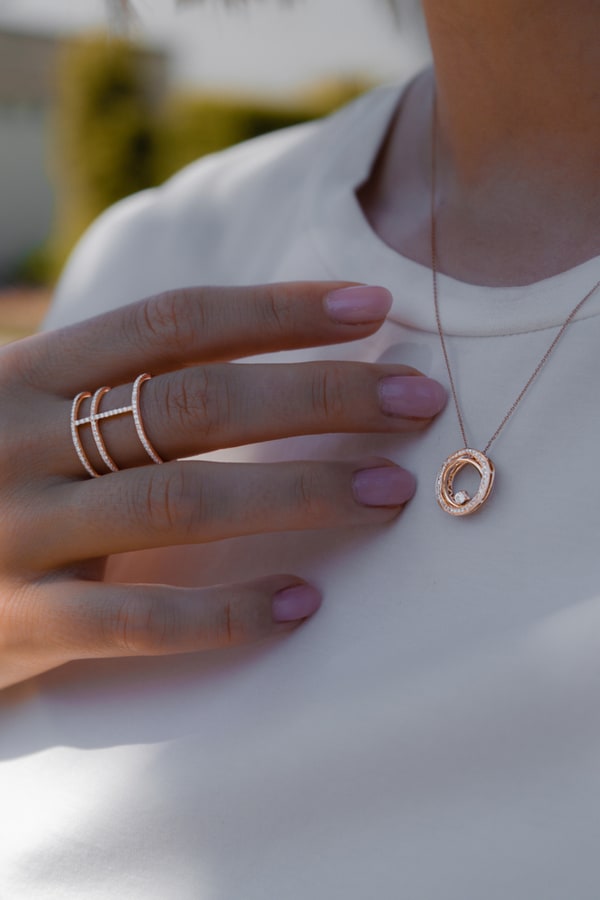
If you like the unusual color of rose gold but are not sure about its quality, you should know that pure gold only sounds prestigious. It is actually fragile and easy to scratching and useless for jewelry designing. Therefore, metal alloys added to gold are highly useful to a certain level and make the jewelry stronger.
Copper is one of the strongest metals, while silver is highly durable. Adding these alloys to pure gold makes the jewelry more resistant and prevents it from wearing off over time.
Another positive trait of red, pink, and rose gold is that they don’t tarnish. So, there is no need to make any special effort for their maintenance.
Possible Problems with Gold and Copper Alloys
Even though copper makes gold more resilient, you can still have a problem if you misuse the gold. For instance, you can cause the gold and copper components to separate by overheating the rose, pink, and red jewelry, leading to its deformities.
Luckily, that only happens under uncommonly high temperatures, so there is usually nothing to worry about.
Although gold doesn’t tarnish, you can notice patina appearing on rose, red, and pink gold surfaces over time due to added copper. That is because copper oxidizes.
Still, you don’t need to worry because it takes a lot of time for the patina to develop. In most cases, you can find it only on antique or vintage jewelry. In such a case, patina can even add to the jewelry’s value and unique look sometimes.
You should be aware that pink, rose, and red gold types are not hypoallergenic. Your skin can have an unpleasant reaction to the jewelry if you are sensitive to copper.
Price

Many believe red, pink, and rose gold are more valuable because of their intriguing color. The truth is, 18K red gold contains the same amount of pure gold as 18K yellow gold. Still, you should consider the brand, style, and current fashion trends when buying jewelry since they significantly influence the price.
In theory, both 18K red and 18K yellow gold should have the same price. However, you will find some rose gold jewelry more expensive than regular yellow gold. That is only because of the demand on the market, not because of the different gold values.
Summary
Pure red, rose, and pink gold types don’t exist. They are gold mixed with copper and silver that affect their color, and the reddish shade level is the only difference in these gold types’ appearances. The higher the copper percentage, the more reddish tone your gold will have.

